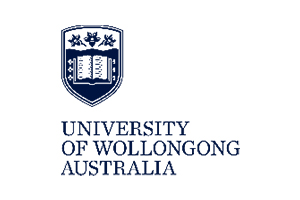I weave what I have seen: The War Rugs of Afghanistan, an exhibition at the ANU’s Drill Hall Gallery until 15 August 2021 and touring.
In the mid-1970s, when I was last there, the rug shops of Afghanistan’s capital Kabul stocked a treasure trove of handmade creations, notably the deep-red rugs and hall runners for which the country was, and still is, famous. The designs were abstract yet symmetrical, rarely featuring human or animal figures, or identifiable objects, certainly not guns and fighter aircraft.
But that has changed, as Afghan society at large has changed.
From late 1979, when the USSR’s troops entered the country to preserve a puppet regime, Afghanistan has been on a timeline of conflict that continues to this day, and the images of its unasked-for war have been recorded on an unusual tableau, its woven rugs.
These images include Russian tanks, some of them heading home after defeat, fighter aircraft, helicopters and the ubiquitous Kalashnikov AK-47. Throughout the 80s and beyond the rugs would come to document the Russian occupation, the Mujahideen resistance, America’s support for the self-serving warlords, and the Taliban that emerged victorious and gave sanctuary to Al-Qaida, the perpetrators of 9/11.
The complexity of weaving asymmetrical images into spun-wool rugs cannot be underestimated. This is a highly complex artistic achievement and the precision of many of the works displayed is nothing less than extraordinary.
Notably, not one of the weavers – all would be women - is named. At best, we learn the regions and the tribal groups most likely to be the source of the creators.
Much of the imagery is propagandist, mostly anti-Russian, some of it anti-US, and mostly Afghan-nationalistic, however the fragmented country is defined.
Propaganda posters were the inspiration for a number of the rugs but of particular interest, in my view, are the portraits of Imam Ali, the Shiia Muslim saint, rarely portrayed, the reformist king Amanullah, and Ahmad Shah Massoud, the legendary field commander who was assassinated by the Taliban a few days before 9/11.
“The exhibition is a testimony to the creativity and resilience of Afghan weavers who have faced the devastating effects of war for more than forty years,” the catalogue explains.
“From the very start of the conflict, Afghan weavers began developing a striking new form of war art involving a complex imagery of armaments, maps, monuments, texts and portraits which soon began to find an international audience. Emerging out of a research project undertaken at the Australian National University by Tim Bonyhady and Nigel Lendon, this exhibition investigates the history, iconography, production and distribution of these extraordinary rugs.”
As Australia’s ill-fated Afghan involvement winds down, and the tortuous case of alleged Afghan war criminal Ben Roberts-Smith continues to drag through the courts, this is a rare insight into a country bedevilled by conflict but blessed with some of the finest (unknown) artists anywhere in the world.
The exhibition was discussed on ABC Radio National with Sally Sara, former ABC correspondent in Afghanistan.
The catalogue of I Weave What I Have Seen – The War Rugs of Afghanistan (Tim Bonyhady & Nigel Lendon) is available from https://dhg.anu.edu.au/publications/
Tim Bonyhady’s book ‘Two Afternoons in the Kabul Stadium: A History of Afghanistan Through Clothes, Carpets and the Camera’ was released recently by Text Publishing, 352pp, $34.99















